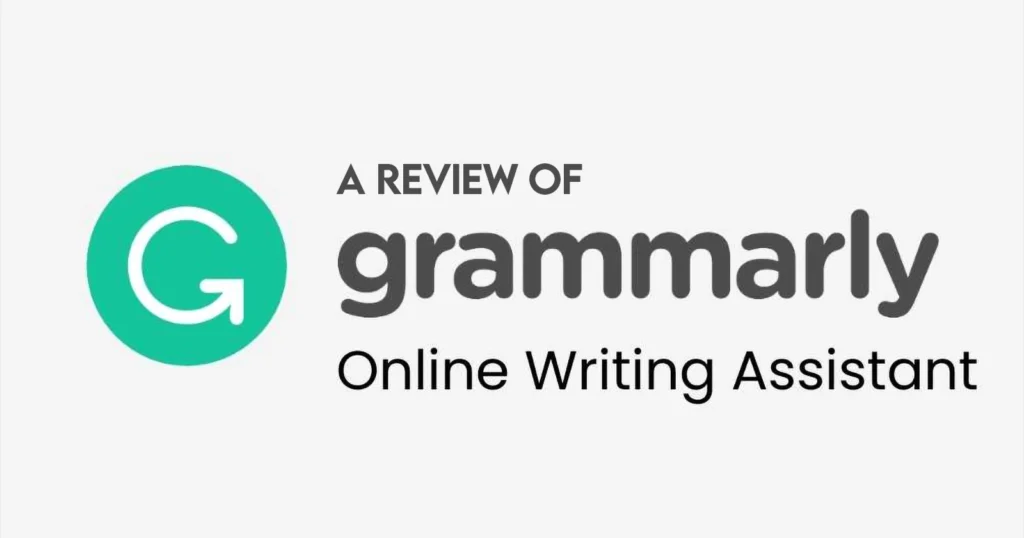
In today’s fast-paced world of digital communication, having a reliable AI writing assistant is no longer a luxury—it’s a necessity. Grammarly has long been a frontrunner, but with a new wave of AI-powered tools emerging, a crucial question remains: is Grammarly still worth it in 2025? In this in-depth Grammarly review, we’ll go beyond the basics to determine if its powerful features and integrations justify the cost. We’ll also compare it with top competitors like QuillBot and ProWritingAid to help you decide if it’s the right choice for your needs.
Affiliate Disclaimer: This post may contain affiliate links, which means if you make a purchase through my links, I may earn a small commission at no extra cost to you. I only recommend products and services I genuinely use and love.
Quick Verdict: Is Grammarly Right for You?
Grammarly remains a top-tier AI writing assistant, offering a polished user experience and best-in-class grammar and tone correction. Its seamless integrations with popular platforms like Google Docs, Microsoft Word, and your browser make it incredibly versatile. While its premium plan is on the pricier side and its plagiarism checker may not be academically rigorous, its powerful AI-driven suggestions and real-time feedback provide undeniable value for professionals, students, and content creators. It scores an 8/10 for its overall effectiveness and ease of use.
Pros and Cons
Pros:
- Industry-leading grammar checker: Catches a wide range of errors from basic spelling to complex punctuation and advanced style issues.
- Real-time tone and style edits: Provides instant feedback on how your writing comes across, helping you adapt your tone for any audience.
- Seamless integrations: Works everywhere you write, including in Gmail, social media, and desktop applications like Microsoft Word.
- AI-powered paraphrasing: Offers a built-in rewriting tool to help you rephrase sentences for clarity and impact.
- Business tools for teams: The Business plan allows for brand voice consistency, style guides, and collaborative analytics.
Cons:
- Expensive premium plan: The monthly cost is significantly higher than many competitors, though annual plans offer substantial savings.
- Can over-correct creative writing: The rules-based suggestions may sometimes clash with intentional stylistic choices.
- Plagiarism checker lacks academic rigor: While good for general web content, it may not be comprehensive enough for academic use.
Key Features of Grammarly
Grammar Checking
Grammarly’s core function is its powerful grammar checker, which has only gotten smarter in 2025. It not only catches basic spelling and punctuation errors but also identifies complex issues like subject-verb agreement, misplaced modifiers, and inconsistent tenses. In recent tests, it has been shown to correct a high percentage of errors in a typical blog post while also boosting the overall readability score.
Real-Time Tone & Style Suggestions
Beyond just correctness, Grammarly helps you communicate effectively. Its real-time tone detector analyzes your writing to provide instant feedback on how your message will be received—whether it’s confident, friendly, formal, or casual. This feature is particularly useful for professionals drafting emails or marketers writing social media copy.
Browser & App Integrations
A major strength of Grammarly is its ubiquity. The browser extension for Chrome, Edge, and Safari integrates with virtually every website, from Gmail and LinkedIn to your company’s CRM. It also offers dedicated desktop apps for Windows and Mac, as well as add-ins for Microsoft Word and Google Docs, ensuring a consistent writing assistant experience across all your platforms.
AI Writing & Paraphrasing
The introduction of Grammarly’s AI features has made it more than just a proofreading tool. Its AI can now rewrite entire sentences and paragraphs for clarity and conciseness. While it’s not a full-fledged AI content generator, its ability to quickly generate drafts from a simple prompt or rephrase existing text is a major time-saver.
Team Features (Business Plan)
For agencies and business teams, the Grammarly Business plan is a powerful tool for maintaining brand consistency. It allows you to create and upload brand style guides, ensuring that every piece of content, from internal reports to client-facing proposals, adheres to a uniform voice and tone. The team analytics dashboard also provides insights into writing trends and common mistakes.
Grammarly Pricing Breakdown (2025)
| Plan | Features | Price |
| Free | Basic grammar, spelling, and punctuation checks | $0 |
| Premium | Everything in Free, plus advanced grammar, tone, and style edits, a plagiarism checker, and more. | $30/month or $144/year |
| Business | All Premium features, plus brand style guides, team analytics, and priority support. | $25/user/month (min. 2 users) |
Grammarly vs QuillBot vs ProWritingAid
A common question is which tool is the best grammar checker. While each has its strengths, the choice often comes down to your primary use case.
| Feature | Grammarly | QuillBot | ProWritingAid |
| Grammar Checker | Best-in-class, highly accurate. | Basic, with a focus on paraphrasing. | Slower but offers more in-depth reports. |
| Paraphrasing Tool | AI-powered, context-aware. | Multiple modes, a more powerful core feature. | Functional but not as versatile. |
| AI Content Gen. | Strong for short-form, real-time rewriting. | Basic, focused on text expansion and summarization. | Not a core feature. |
| Tone Detection | Real-time, highly accurate. | Lacks a dedicated tone feature. | Strong, with detailed reports. |
| Price | High cost at $30/month. | Most affordable at $14.99/month. | Very competitive pricing. |
Verdict: The winner of the Grammarly vs QuillBot comparison depends on your needs. Grammarly is the best all-around tool for professionals and teams who prioritize accuracy and tone. QuillBot is the superior choice for students and those who need an affordable tool focused on paraphrasing. ProWritingAid is the ideal solution for authors and creative writers needing deep, long-form editing insights.
Use Cases
- Students: Excellent for cleaning up essays, ensuring proper citation formatting, and refining academic tone.
- Content Marketers: A lifesaver for writing error-free social media posts, blog articles, and email newsletters that align with a brand voice.
- Business Professionals: Ensures clear, confident, and professional communication in emails, reports, and client proposals.
Final Verdict: Is Grammarly Worth It in 2025?
So, is Grammarly worth it? For most individuals and teams who rely on clear, professional communication, the answer is a resounding yes. The investment pays for itself by saving time, preventing embarrassing mistakes, and elevating the quality of your writing across all platforms. Its intuitive design and powerful AI make it the best grammar checker for anyone who writes regularly.
However, if you’re on a tight budget or your primary need is paraphrasing, alternatives like QuillBot are worth considering. But for a comprehensive, all-in-one writing assistant that offers the best blend of features, integrations, and accuracy, Grammarly remains the top choice in 2025.
FAQ: Grammarly Review 2025
Is Grammarly good for students?
Yes. Its grammar checking, citation assistance, and readability tools are excellent for academic writing. It helps students avoid common errors and improve the clarity of their papers.
Can Grammarly replace a human editor?
No. While Grammarly is an incredible tool that significantly reduces editing time and catches most errors, it can’t replace the nuanced feedback and creative insight of a human editor. It’s best used as a powerful first line of defense.
How accurate is the plagiarism checker?
Grammarly’s plagiarism checker is effective for identifying content copied from general web sources. However, it’s not designed to scan academic databases or other gated research material, so it should not be relied upon for university-level plagiarism checks.
Grammarly vs QuillBot—which is better?
This is a matter of need. Grammarly is the superior option for overall writing improvement, with a focus on grammar, tone, and clarity. QuillBot is the better tool if your main goal is to rephrase sentences and paragraphs quickly and affordably.
Disclaimer: This review is for informational purposes only and does not constitute financial, legal, or professional advice.

